I seem to have a penchant for old, almost forgotten skills. Like cooking from scratch, raising crops, and foraging for wild edibles, tracking is one of those nearly lost skills. And one of my passions. I’ve been tracking seriously for a decade, and recently earned a Track and Sign Level III certificate from the CyberTracker program, which required a score of 90% or better. The evaluation was such an exciting and inspiring process, that I had to write about it. Keep reading, to learn what wildlife tracking skills can do for you. And, if you live in New England and want to jump right in and learn, check out our Wildlife Tracking Walks.
After generations of fading into obsolescence, wildlife tracking has grown in popularity in recent years. No doubt this is due to the work of evolutionary biologist, Louis Liebenberg. He recognized the value of animal tracking skills, and helped traditional African hunter-gatherers use them to earn a living in data collection for wildlife monitoring, research, and anti-poaching efforts.
Part of Liebenberg’s work involved development of the CyberTracker evaluation system, which became an international standard for tracking skills. This elevated the ancient art and science of tracking to a respected discipline within the modern world. But regardless of its status within the modern world, tracking is useful to almost anyone.
Tracking skills deepen your awareness and understanding of wildlife. And that can help you better protect pets, livestock and garden produce; develop competency in hunting; make more informed decisions that impact wildlife; and meet people from vastly different walks of life. Not to mention the fact that it’s great physical and mental exercise, all at once.
What animal tracking involves
It’s more than just track recognition. It’s easy to memorize the photos of perfect tracks shown in field guides, but out in the actual field, most tracks are far from perfect. Those on crusty snow, deep, fluffy snow, or loose, dry sand, can be extremely indistinct. Often you need to know a lot more about the animal to figure out what you’re looking at. Here are some of things that help you determine species:
- Tracks – overall size, number of toes, presence/abscence of claws, shape of heel pad
- Trail patterns characteristic of each species (usually several different ones)
- Excretions: scat appearance, urine odor, and other scenting behavior
- Preferred foods and signs of feeding
- Hunting style
- Caching behavior
- Ability and inclination to climb, dig, swim, or fly
- Habitat preferences
- Reproductive habits
- Nocturnal and diurnal activity
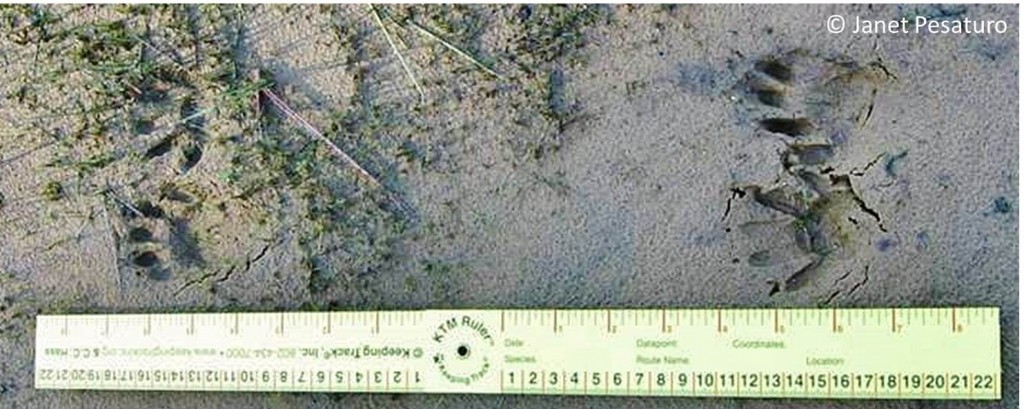
Raccoons are common predators of small livestock, but tracks are rarely this crisp and clear, so it’s a good idea to learn more about this animal than just the appearance of a perfect track.
Wildlife tracking skills help prevent loss
Hungry wild animals don’t recognize your property lines, any more than you recognize their territorial boundaries. When possible, they’ll harvest “your” bounty, because to them it’s fair game for the taking, just as you feel entitled to their resources.
Familiarize yourself with the wildlife of your region, know which species frequent the habitats around you, which are likely to partake of your property, and how they will attempt to get it. Doing so, you will be able devise a set-up and routine to prevent conflict with wildlife. And, if you learn to detect subtle signs of lurking animals, you may be able to make further adjustments to prevent loss.

The track size and unique trail pattern lead the tracker to suspect that a raccoon left these snowed over tracks. This underscores the value of more advanced tracking skills.
If you can’t interpret the signs of lurking predators, loss might be inevitable. Some people shoot or trap, after the damage has been done, but that’s a bad outcome for both the animal and you. It’s only a matter of time before another one discovers the vacancy you have created, and moves in to strike. You might find yourself trapped in an endless cycle of waiting and shooting. But if you can prevent conflict in the first place, the resident individuals often learn that they can’t get the goods. Attempts will be fewer and further between.
Animal tracking skills and hunting
I don’t hunt – I can’t sit still in the cold, and hate cutting up animals – but if you want healthful, and locally and humanely produced meat, you can’t beat wild game. I have a deep respect for those who hunt for food and take care to humanely dispatch the animal.
Excellent tracking skills are obviously of great benefit to a hunter. The deeper your knowledge, the more likely you’ll get your quarry. The broader your knowledge, the more options you have, including rabbit, deer, moose, bear, turkey, grouse, waterfowl, and more. And the best part is that mother nature, not you, did the work of raising them.
A beginner might recognize the appearance of a crisp, perfect deer track, but an experienced tracker can diagnose deer, even when tracks are nothing but pock marks. They use cues such as the pattern of tracks, the distance between steps, and the width of the trail. They also recognize scats, browse sign, and antler rubs. They can even guestimate the size of the deer based on the size of the tree selected for rubbing.
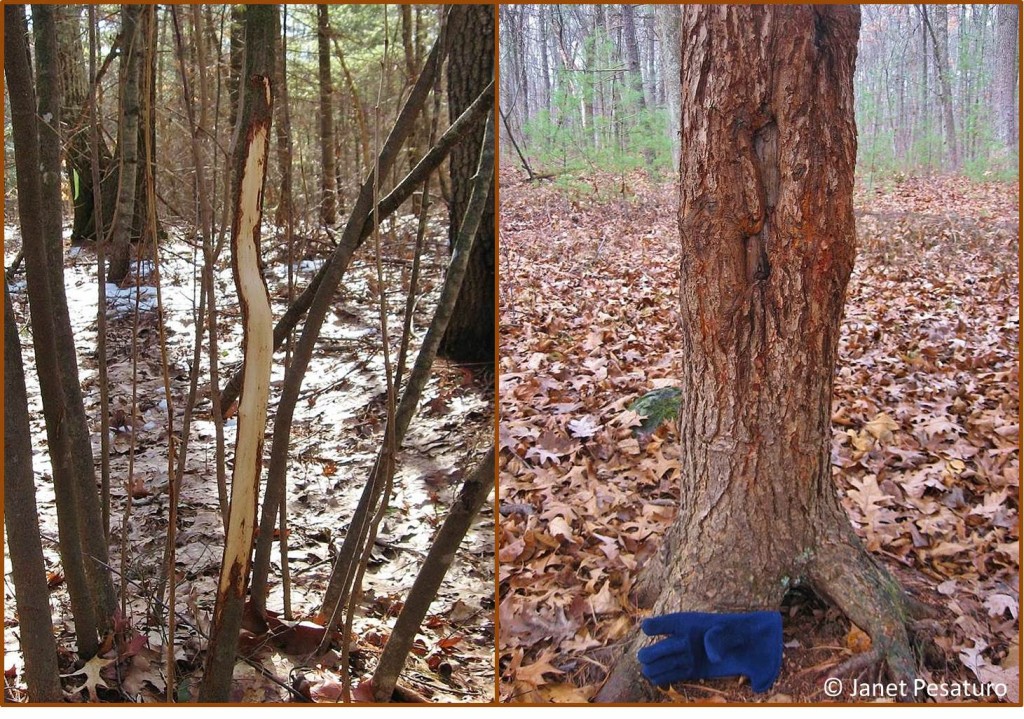
Bucks rub their antlers against small trees, and studies suggest that smaller deer choose smaller trees, such as the one on the left. The tree on the right is quite large for a rub, and probably indicates large buck.
Animal tracking and sustainability
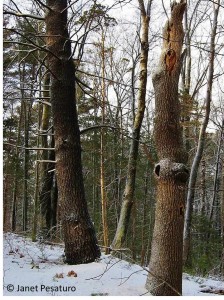
Large diameter snags like this are valuable to many species, so wildlife minded foresters usually leave them standing.
Sustainability is not just about renewable energy and recycling. It’s also about reducing impact on wildlife. And anything that improves your understanding of nature, can empower you to make wildlife friendly decisions.
So go outdoors and enter the world of your wild neighbors. Open your mind and let them tell you their stories. You’ll learn that their very existence depends on healthy populations of other plants, pollinators, herbivores, omnivores and carnivores. Then you’ll realize that yours does, too. Perhaps that will inspire you to plant native wildflowers, to harvest trees with forest health in mind, and to use nonlethal methods of livestock protection. Earth is a shared community of interdependent species. We are but one of them.
The value of animal tracking: community building and wildlife conservation
Like foraging, tracking is one of those activities that appeals to seemingly disparate groups. Homesteaders, preppers, nature nerds, hipster locavores and redneck hunters alike, all find common ground out in the field, searching, sniffing, and listening. It’s always nice when different groups cut through philosophical and political differences and unite over any topic. But in this case it has major implications for wildlife conservation, because all of these groups are stake holders. Perhaps through a shared appreciation for the natural world, they will join forces to ensure healthy wildlife populations for generations to come.
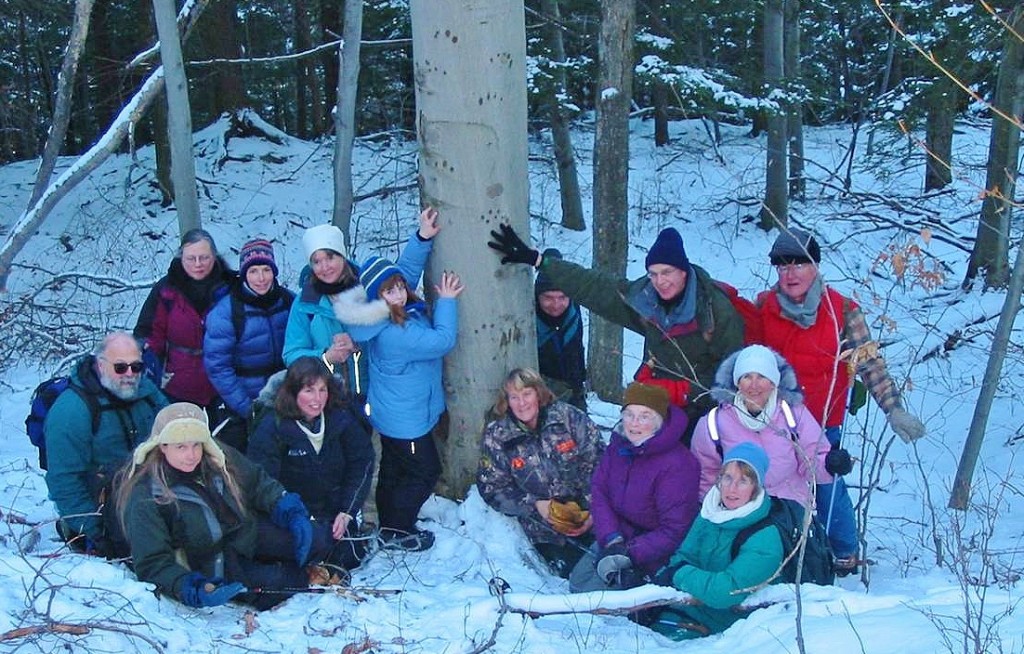
This motley crew trained together at a Vermont wildlife tracking program called Keeping Track. Notice the bear claw marks on the tree.
Shared on: The 104 Homestead Blog Hop #6, Thank Goodness it’s Monday #57, Simple Life Sunday #4, Homestead Barn Hop #146, Mostly Homemade Mondays #67, Natural Living Monday #60, Tuesdays with a Twist #45, Backyard Farming Connection #67, Tuesday Greens #59, Wordless Wednesday #79, Wildcrafting Wednesday #124, Waste Not, Want Not Wednesday #61, HomeAcre Hop #57, Time Travel Thursday #186, From the Farm blog hop, 104 Homestead hop #7, Freedom Fridays #15, Simple Saturday, Simply Natural Saturday, Homesteaders Hop #1, Mountain Woman Rendezvous #36, Friday Link Love #2, Simple Living Saturdays











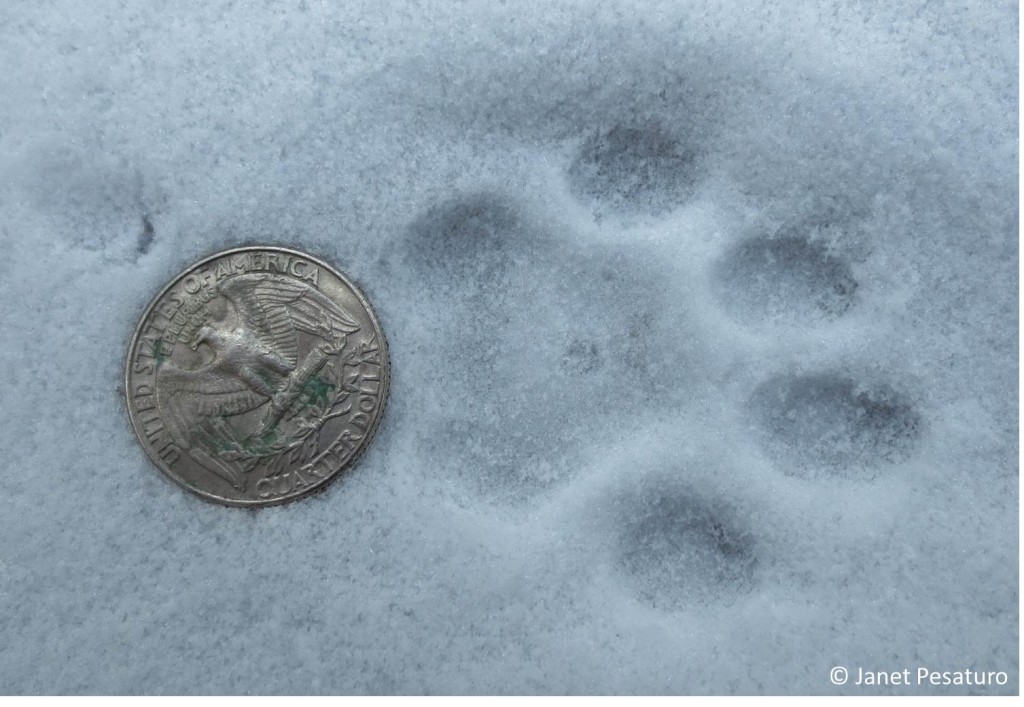
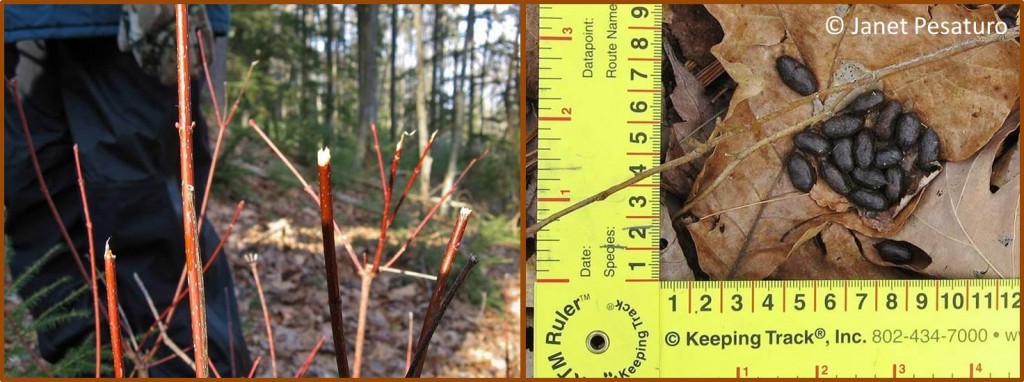
This interesting post has been featured from last week’s “Tuesdays with a Twist” blog hop! If you get a chance stop on by & grab a “featured” button.
Thanks
Angie
http://www.godsgrowinggarden.com/2014/02/time-to-link-up-tuesdays-with-twist_18.html
Pingback: The Value of Animal Tracking Skills | Science on the Run
That is really helpful. I was panicking about tracks in the yard by the coop one morning until my husband pointed out it was just a small dog. My coop can easily withstand attack by small dog LOL. Thanks for taking the time to share this on The 104 Homestead Friday Blog Hop!
Don’t forget one of the most important reasons/uses for tracking: spiritual. We couldn’t be further from our roots, as a species, than we are today. It’s been a very long time sine our collective feet have touched real ground. That has to have some effect on society’s current obsession with bad news, negativity, and general apathy toward wildlife and wildlands conservation.
That is an excellent point, Jack. A serious omission on my part. I tend to exist more on an intellectual than spiritual level, and tried to express that sort of connectedness with nature through my comments on sustainability, community building, and conservation. But you are so right; the spiritual reason for tracking deserves mention on its own. Thanks for pointing that out.
This is very interesting and probably out of my talents. With my lack of attention to detail I can probably not even track the biggest paws of a bear 🙂
Pingback: Survivalism, Technology, and Sustainability - One Acre Farm
Pingback: 25 Skills to Learn This Summer Before the Zombies Come!
Pingback: How to Get Started Tracking Animals: 16 Tips & Resources -
Pingback: The Truth About Trapping: An Honest Look at a Controversial Topic -